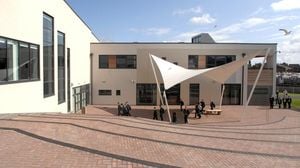After spending over 374 days aboard the International Space Station (ISS), cosmonauts Oleg Kononenko and Nikolai Chub, along with NASA astronaut Tracy Caldwell Dyson, safely returned to Earth on September 23, 2024. Their historic mission has set multiple records, showcasing the advancements and achievements of human space travel.
The Soyuz MS-25 spacecraft touched down on the Kazakh steppe at 7:59 a.m. EDT (4:59 p.m. local time), concluding another chapter of exploration beyond our planet. This mission not only marks the culmination of 184 days spent aboard the ISS for Dyson but also highlights the impressive feat achieved by Chub and Kononenko, who logged the longest continuous spaceflight to date.
Upon landing, immediate recovery operations commenced. Russian recovery crews and medical personnel swiftly assisted the trio, ensuring they were fit after their long duration in microgravity. The astronauts were greeted with smiles and support as they exited the Soyuz, each having contributed uniquely to the mission's success.
Oleg Kononenko, now the world record holder for total time spent in space, has accumulated over 1,111 days across five missions. This surpasses the previous record, held by Gennady Padalka, by 233 days. Kononenko reflected on his experiences, stating, “Thanks to all my crewmates for your friendship. It has been a great time and pleasure to work and spend time together here as a big family on board the International Space Station.” His experience includes seven spacewalks, two of which were performed during this most recent mission, indicating his extensive involvement in groundbreaking space science.
Dyson, who had been aboard the ISS since March, now has 184 days of experience on her third flight totalizing close to 400 days across her missions. “Oleg, we’ll miss your hundreds of stories around the dinner table,” remarked NASA astronaut Sunita Williams, who took over command of the station during Kononenko's absence. This camaraderie highlights the bonds formed among astronauts during their time together.
Chub, who spent over 374 days during his first space mission, expressed pride in contributing to this significant period for human exploration. His presence marks the emergence of new generations of space explorers as he joins the ranks of astronauts experienced enough to tackle missions of extended duration.
The significance of this flight extends beyond the individual records set. Kononenko and Chub’s year-long stay began when they launched on Soyuz MS-24 on September 15, 2023. Instead of returning with their launch mate, they remained to allow for shorter missions, enhancing the collaborative experience on the station. Their time aboard was characterized by significant research and experiments which contribute to our broader knowledge of space and its effects on the human body.
During this mission, the crew completed numerous scientific experiments including studying the impacts of microgravity on various biological processes. Dyson, as the only NASA astronaut aboard for this durations, played a pivotal role too, facilitating the continued flow of research aboard the ISS.
The mission also included the arrival and departure of other astronauts. Marina Vasilevskaya of Belarus and Roscosmos’ Oleg Novitskiy briefly joined the crew, emphasizing the international cooperation present at the station. The operational dynamics aboard the ISS often shift, accommodating growing scientific inquiry and operational maneuvers.
Kononenko’s previous record was closely related to the collective accomplishments of his comrades. The motivation spurred from teamwork is deeply rooted, reminding those involved of the importance of unity among nations — particularly between the U.S. and Russia, even amid geopolitical tensions. These cooperative efforts exemplify how, regardless of international relations, humans can come together with the shared goal of pushing the boundaries of science.
Now, with Expedition 71 concluded, Expedition 72 begins the next phase of ISS operations. Remaining crew members include experienced astronauts such as Williams, Butch Wilmore, and Jim Koch, ensuring continuity and stability during the station's exciting transition.
Kononenko, Chub, and Dyson flew from the landing site to the recovery city of Karaganda by helicopter, readying themselves for debriefing and returning home to friends and families. Dyson will then continue her transition by taking a NASA flight back to Houston, Texas, where she will share her incredible experiences.
With the conclusion of this mission, NASA and Roscosmos have demonstrated once again the power and potential of human exploration. The continued use of the Soyuz program remains pivotal as they plan future expeditions, setting the stage for continued discovery and the human exploration of space. NASA's next plans include Crew Dragon flight launches aimed at replacing these crew members with the first-time flyers, ensuring the legacy of the ISS continues to develop.
Overall, the mission has reiterated the importance of international cooperation and humanity's shared curiosity about the universe, paving the way for future space travelers and explorers.
The Soyuz MS-25 mission showcases what is achievable through collaboration and innovation within space exploration, inspiring future generations to dream big and reach for the stars.



